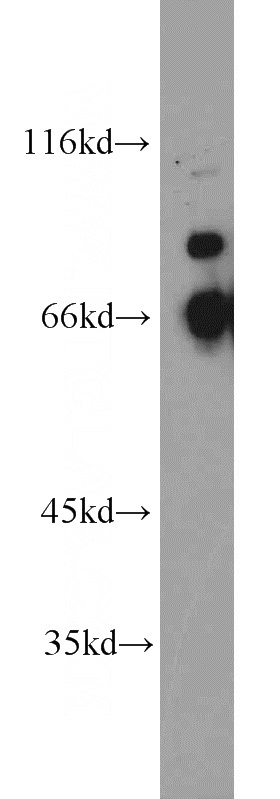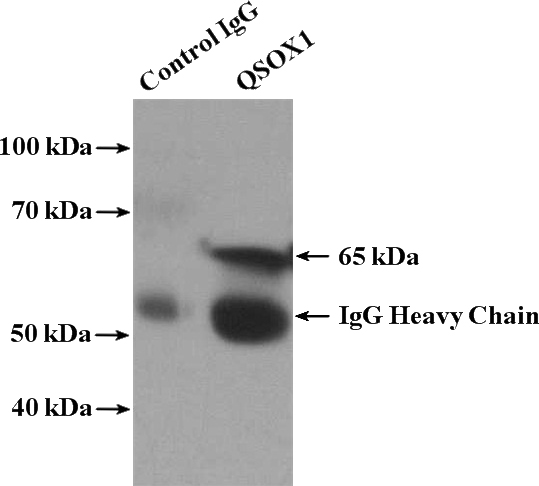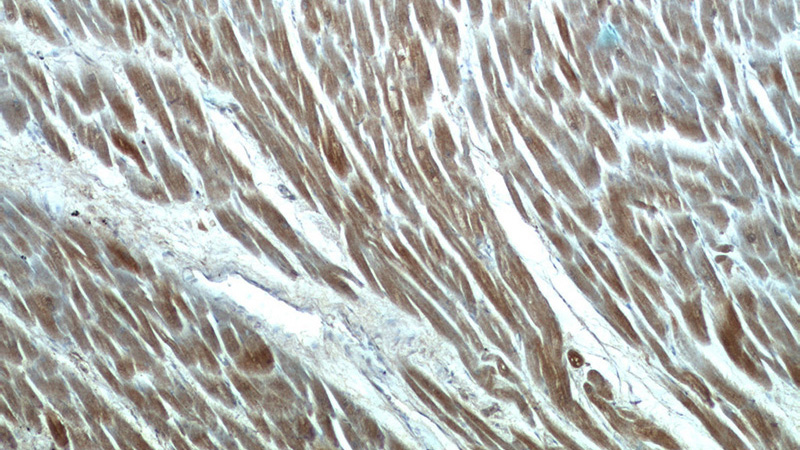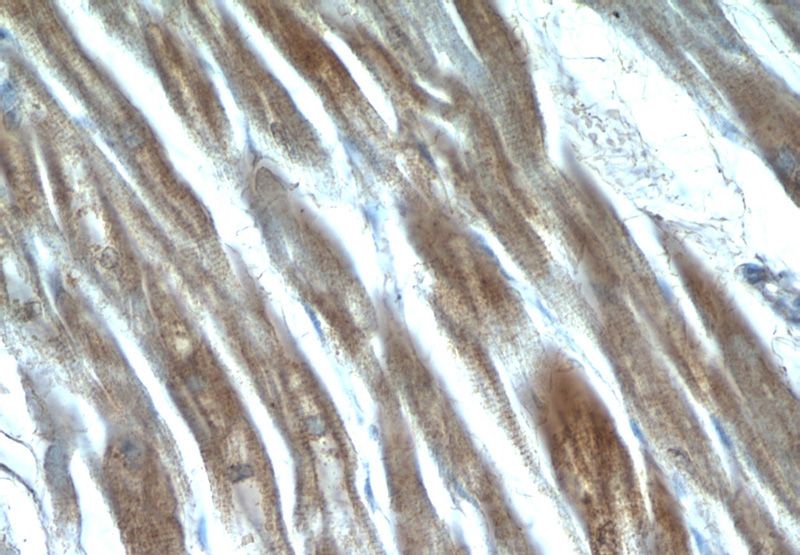-
Product Name
QSOX1 antibody
- Documents
-
Description
QSOX1 Rabbit Polyclonal antibody. Positive WB detected in SW 1990 cells, HeLa cells, HT-1080 cells, human heart tissue, human placenta tissue, MCF7 cells, mouse heart tissue. Positive IP detected in SW 1990 cells. Positive IHC detected in human heart tissue. Observed molecular weight by Western-blot: 65-94 kDa
-
Tested applications
ELISA, WB, IHC, IP
-
Species reactivity
Human,Mouse,Rat; other species not tested.
-
Alternative names
FLJ34858 antibody; hQSOX antibody; QSCN6 antibody; QSOX1 antibody; Quiescin Q6 antibody; Sulfhydryl oxidase 1 antibody
-
Isotype
Rabbit IgG
-
Preparation
This antibody was obtained by immunization of QSOX1 recombinant protein (Accession Number: NM_001004128). Purification method: Antigen affinity purified.
-
Clonality
Polyclonal
-
Formulation
PBS with 0.1% sodium azide and 50% glycerol pH 7.3.
-
Storage instructions
Store at -20℃. DO NOT ALIQUOT
-
Applications
Recommended Dilution:
WB: 1:500-1:5000
IP: 1:200-1:1000
IHC: 1:20-1:200
-
Validations

SW 1990 cells were subjected to SDS PAGE followed by western blot with Catalog No:114403(QSOX1 antibody) at dilution of 1:1000

IP Result of anti-QSOX1 (IP:Catalog No:114403, 4ug; Detection:Catalog No:114403 1:300) with SW 1990 cells lysate 2400ug.

Immunohistochemistry of paraffin-embedded human heart tissue slide using Catalog No:114403(QSOX1 Antibody) at dilution of 1:50 (under 10x lens)

Immunohistochemistry of paraffin-embedded human heart tissue slide using Catalog No:114403(QSOX1 Antibody) at dilution of 1:50 (under 40x lens)
-
Background
QSOX1(Sulfhydryl oxidase 1) catalyzes the oxidation of sulfhydryl groups in peptide and protein thiols to disulfides with the reduction of oxygen to hydrogen peroxide.It has two isoforms with the molecular weight of 67 kda and 83 kDa,respectively. It is detected a band of 95 Kda in HT1080 cell lines (PMID:17331072).Isoform 1 is expressed on golgi apparatus membrane and isoform 2 is secreted (PMID:10708601). The isoform1(QSOX1a) is the full length of QSOX1, approximately 78 kd; and the isoform2(QSOX1b) is the splicing form, approximately 62kd(PMID:14633699; 2496424). QSOX1 is highly expressed in tumor cell lines but is not expressed in adjacent normal cells (PMID:21989104).
-
References
- Rutkevich LA, Williams DB. Vitamin K epoxide reductase contributes to protein disulfide formation and redox homeostasis within the endoplasmic reticulum. Molecular biology of the cell. 23(11):2017-27. 2012.
- Pernodet N, Hermetet F, Adami P. High expression of QSOX1 reduces tumorogenesis, and is associated with a better outcome for breast cancer patients. Breast cancer research : BCR. 14(5):R136. 2012.
- Katchman BA, Ocal IT, Cunliffe HE. Expression of quiescin sulfhydryl oxidase 1 is associated with a highly invasive phenotype and correlates with a poor prognosis in Luminal B breast cancer. Breast cancer research : BCR. 15(2):R28. 2013.
- Lake DF, Faigel DO. The emerging role of QSOX1 in cancer. Antioxidants & redox signaling. 21(3):485-96. 2014.
- Tome ME, Schaefer CP, Jacobs LM. Identification of P-glycoprotein co-fractionating proteins and specific binding partners in rat brain microvessels. Journal of neurochemistry. 134(2):200-10. 2015.
- Antwi K, Hostetter G, Demeure MJ. Analysis of the plasma peptidome from pancreas cancer patients connects a peptide in plasma to overexpression of the parent protein in tumors. Journal of proteome research. 8(10):4722-31. 2009.
- Katchman BA, Antwi K, Hostetter G. Quiescin sulfhydryl oxidase 1 promotes invasion of pancreatic tumor cells mediated by matrix metalloproteinases. Molecular cancer research : MCR. 9(12):1621-31. 2011.
Related Products / Services
Please note: All products are "FOR RESEARCH USE ONLY AND ARE NOT INTENDED FOR DIAGNOSTIC OR THERAPEUTIC USE"
